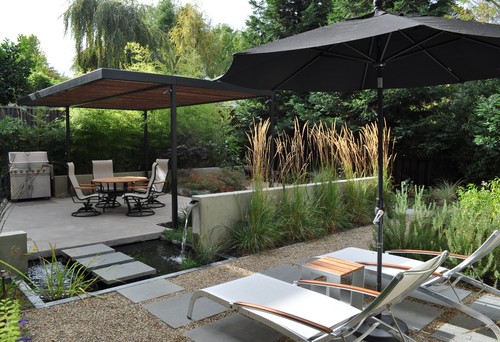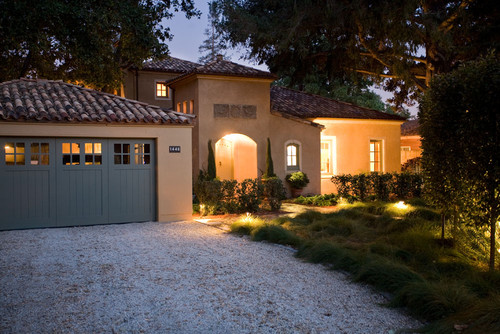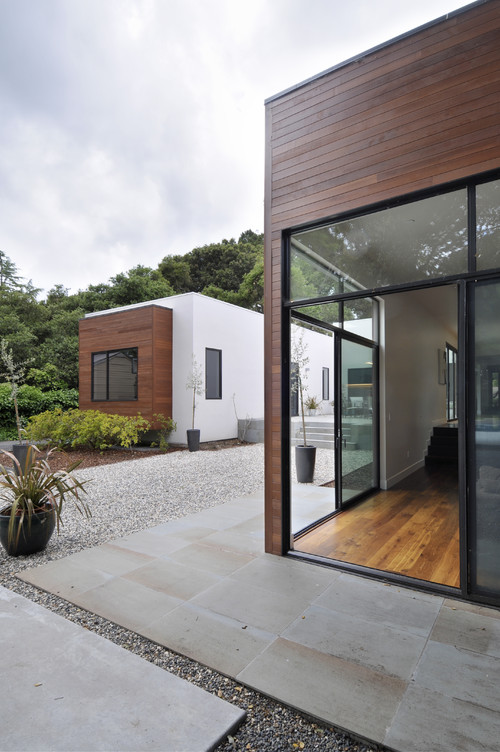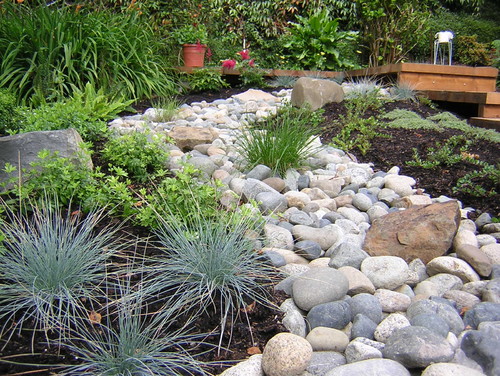Design Dilemma: Gravel in the Garden
When it comes to garden design, gravel has a rather pedestrian reputation (no pun intended). It’s sort of a “been there, done that” attitude which has people looking for sexier alternatives, like stone pavers or tile. And yet, nothing can be more practical and more modern in feeling than gravel. It holds several advantages over other materials — it’s relatively inexpensive at $1 to $5 per square foot, and it can last a lifetime with proper maintenance. Unlike other more solid options, it has great drainage properties, which prevents driveways, patios and pathways from flooding. When installed properly, it can eliminate weeds. And the other great thing about gravel is that while it helps define and pave spaces, it also retains a natural, outdoorsy feel that keeps a yard and drive feeling rustic.
Take a look at some prime examples here:
Above, a home retains a kind of country manor feel, courtesy of a gravel driveway. If this home had a paved driveway, it would feel much more citified and lose part of it’s charm.
In the example above, a modern home feels casually inviting, thanks to its use of gravel in the drive. Concrete or stone pavement would have felt too heavy in this context.
And here, a gravel drive keeps a home feeling quietly upscale. A paved driveway would have felt too heavy against the stone of the house, and a bit like the owners were “trying too hard.” Instead, it all feels casual and natural. These people probably own two golden retrievers.
Are you interested in using gravel as an architectural feature of your garden? Below, a modern home uses gravel in a streamlined modern way. Gravel provides texture and contrast against large concrete pavers:
Here’s another view of the same house and yard:
The advantage of gravel in this context is that it is extremely low maintenance. No mowing! And because it’s gravel, it also means it’s great for those who want to conserve on water use. Gravel naturally protects against weeds, although some weeds may pop up (use a tarp underneath which will allow for water to drain but which discourages weed growth.) There are a few cons to using gravel. If you live in a cold climate where snow removal is necessary, gravel can be difficult to deal with in driveways. Initially, after installation, gravel can also produce dust. That should subside over time, though. Finally, gravel can develop little sinkholes and ruts. But the plus is that such defects can easily be addressed as they happen— and at a fraction of what it would cost to repair an asphalted surface.
Keep in mind that there are an array of gravel choices out there, from decomposed granite to crushed granite to pea and rainbow granite to river rock and Mexican beach pebbles. Pea granite is particularly useful for filling in between paved stones and for patios. Decomposed granite can also be used on patios and as a top dressing around arid desert plants. Here’s what both looks like:
Mexican pebbles and river rock are much larger and best used as decorative accents, such as creating a dry river bed or for lining a border.
Are you convinced yet? Gravel may easily be your most ecological, economical and best aesthetic choice for your driveway, yard or patio. You’ve got tons of options. Gravel is “pedestrian” no more!








Leave a Comment